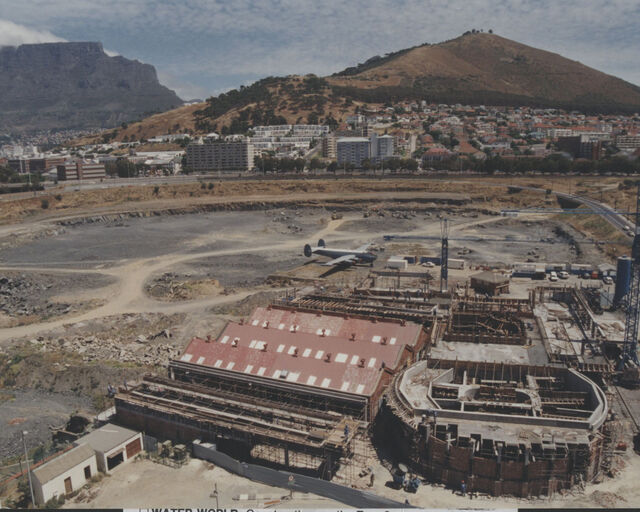World Turtle Day: What kinds of turtle do we find in South Africa (with infographics)
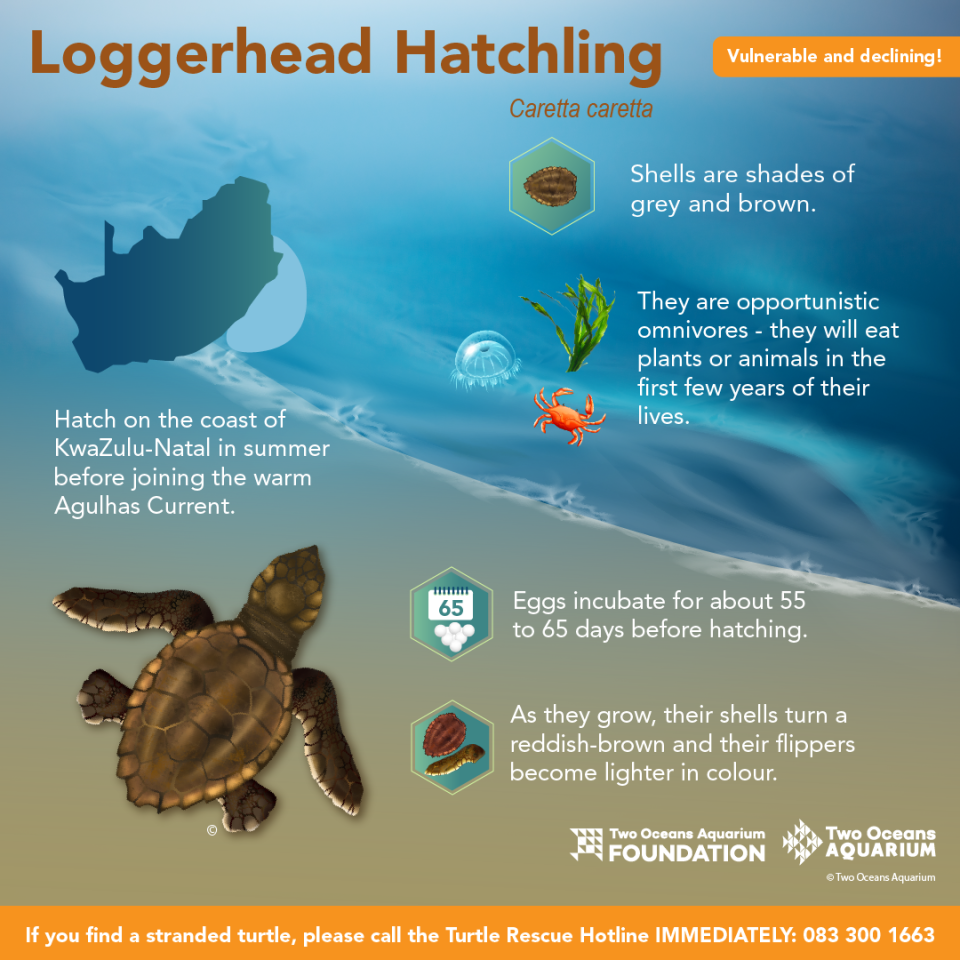
It's World Turtle Day, and there's no better way of celebrating the incredible sea turtles that grace the South African coastline than by sharing information which can help you to save them. Five of the world's seven sea turtle species are found in South African waters, but only two of these nest here. If you ever visit the beach - you might one day be in a position to be able to rescue one of these precious, endangered animals.
Sea turtles do not return to land, other than during their nesting period, so ones found stranded on the South African coastline, and in the Western Cape in particular, are almost always in distress. The Two Oceans Aquarium Foundation rehabilitates rescued sea turtles of all these species, returning them to the ocean so that they can contribute to their natural populations. With the support of an active volunteer Turtle Rescue Network, we're able to coordinate sea turtle rescues along the entire coast of the Western Cape, bringing turtles to the Aquarium to be nursed back to health.
Let's take a closer look at the types of turtle you're likely to encounter:
Loggerhead hatchlings
The early years of a loggerhead hatchling’s life are known as the “lost years” – they spend as long as 12 years in the open ocean after hatching, making this period difficult for scientists to study. They rely on floating beds of seaweed and the currents to conserve energy and grow into juveniles! In South Africa, loggerheads hatch on the coast of northern KwaZulu-Natal in late summer and early Autumn, and we typically see a "stranding season" taking place from March onwards in the Western Cape.
At the Turtle Conservation Centre, about 70% of the turtle hatchlings our team cares for are loggerheads. After following the warm Agulhas Current, many hatchlings get spat out into cooler coastal waters, get cold-stunned, and strand on our shores. Our turtle team rehabilitates them until the following year when they are released into summer’s warm waters.
Loggerhead adults
The loggerhead turtle is a keystone species: Other animals in its ecosystem depend on it for survival! The loggerhead’s diet of molluscs makes its excretion a great calcium source for other animals. Barnacles, crabs, and algae also live on their shells!
At the Two Oceans Aquarium Foundation Turtle Conservation Centre, our team is rehabilitating two sub-adult loggerhead turtles, Kai and Nobomvu. Kai was stranded as a hatchling in 2020, while Nobomvu arrived in 2021, entangled in 50kg of ghost fishing gear. Now, both are confidently swimming in the I&J Ocean Exhibit as the final stage of rehabilitation.
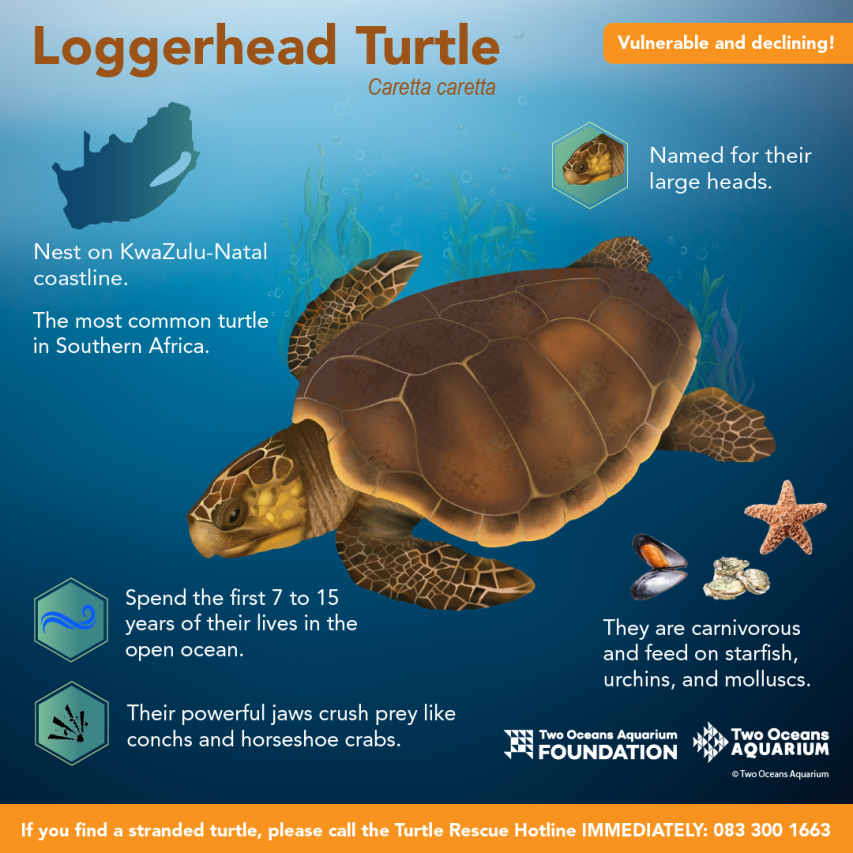
Leatherback hatchlings
Leatherback hatchlings have a tough start to life – only one in a thousand hatchlings will survive to adulthood. Eggs are often stolen from nests for subsistence or as aphrodisiacs. A leatherback nest contains around 80 eggs, making each hatchling precious to the species' survival. Like loggerheads, leatherbacks nest in northern KwaZulu-Natal, and we see them stranding, albeit rarely, in the Western Cape from March onwards.
At our Turtle Conservation Centre, leatherback hatchlings are rare visitors. This is because they are well-adapted to colder conditions – with a thick layer of fat, an ability to retain heat, and the most hydrodynamic structure of all turtles, they don’t struggle as much as loggerheads in the cold Western Cape waters.
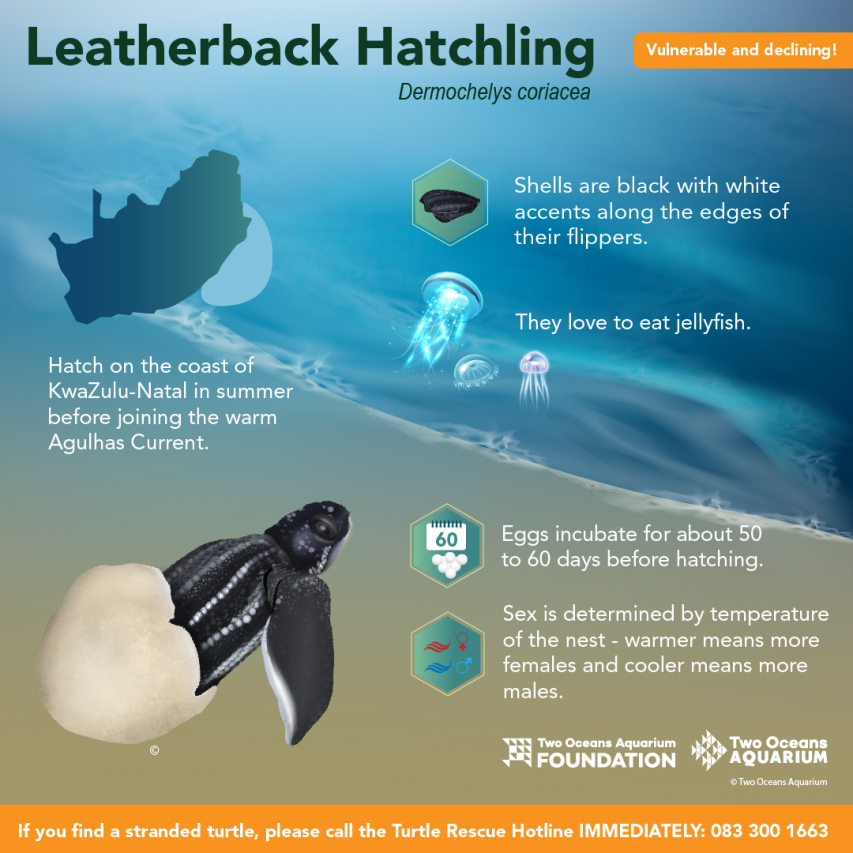
Leatherback adults
Leatherback turtles are the oldest turtle species for a reason: They are the most hydrodynamic of all turtles! Unlike hard-shelled turtles, their inky-blue carapace is rubbery and flexible. This quality gives leatherbacks their impressive diving ability! They are also uniquely adapted to colder conditions, enabling them to hunt in deeper waters, and giving them more resilience in colder conditions, like those around the Cape.
At the Turtle Conservation Centre, our team typically treats one leatherback turtle per season. Leatherbacks prefer the open ocean, so do not stray too close to our shores. Unfortunately, these gentle giants are vulnerable to extinction as they are frequent victims of ghost fishing gear, plastic ingestion, and boat strikes at sea.
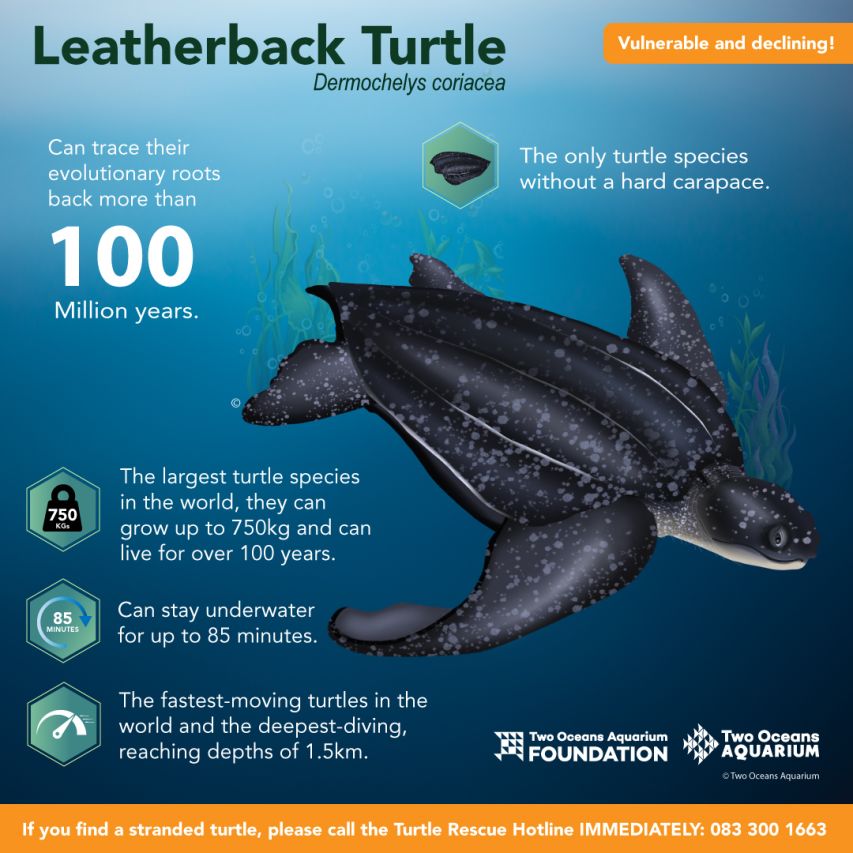
Green trutles
The green turtle is so named because the fat layer underneath the carapace is green. They reside in South African waters but are widely distributed, nesting in 80 countries - although South Africa is not one of them. Unfortunately, these turtles are endangered and declining in numbers.
Green turtles are one of the more common turtle species that our Turtle Conservation Centre works to rehabilitate - just this year, we've had six green turtles in rehabilitation. One of the Aquarium's most famous rehabilitation stories is that of our beloved Bob, a green turtle who spent 8 years being rehabilitated and has recently been released back into the wild.
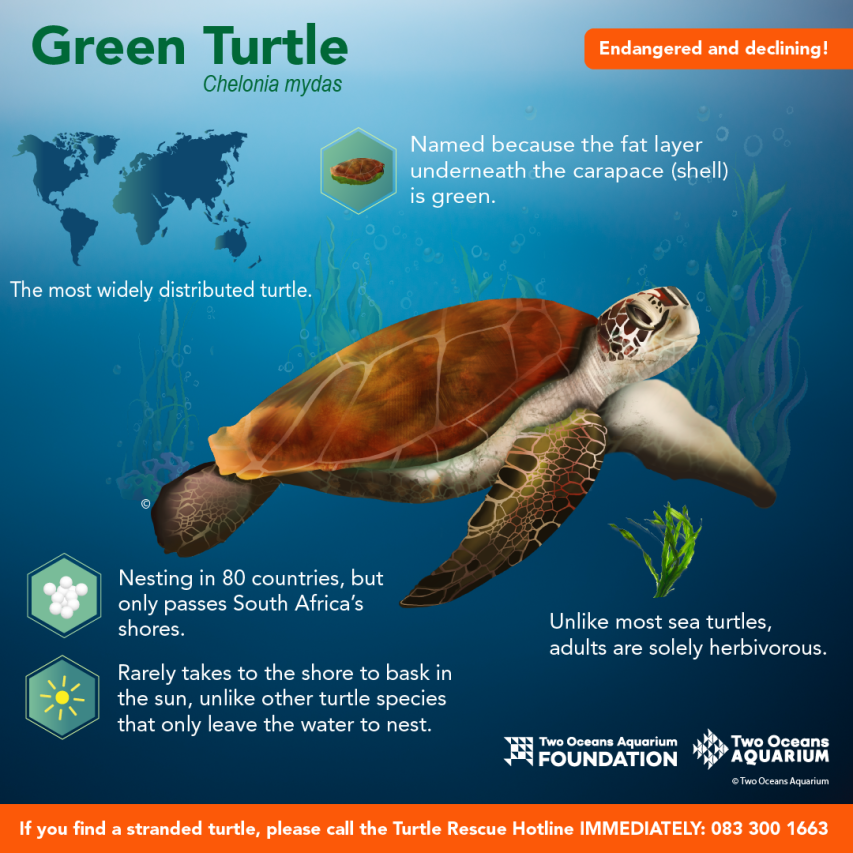
Hawksbill turtles
Hawksbill turtles, named for their curved beaks, do not nest natively in South Africa. They enter our waters as strays, visiting while seeking out feeding grounds. While young, hawksbills' carapaces are heart-shaped, but elongate as they mature. Historically, hawksbill turtles were poached for their shells, which were used to make jewellery and ornaments, and this has led to them being critically endangered today.
Our Turtle Conservation Centre at the Two Oceans Aquarium currently has three hawksbill turtles undergoing rehabilitation. These turtles are quite fussy eaters (corals are their preferred food), so the team works hard to ensure their diets are appropriate and assists in strengthening them up for release.
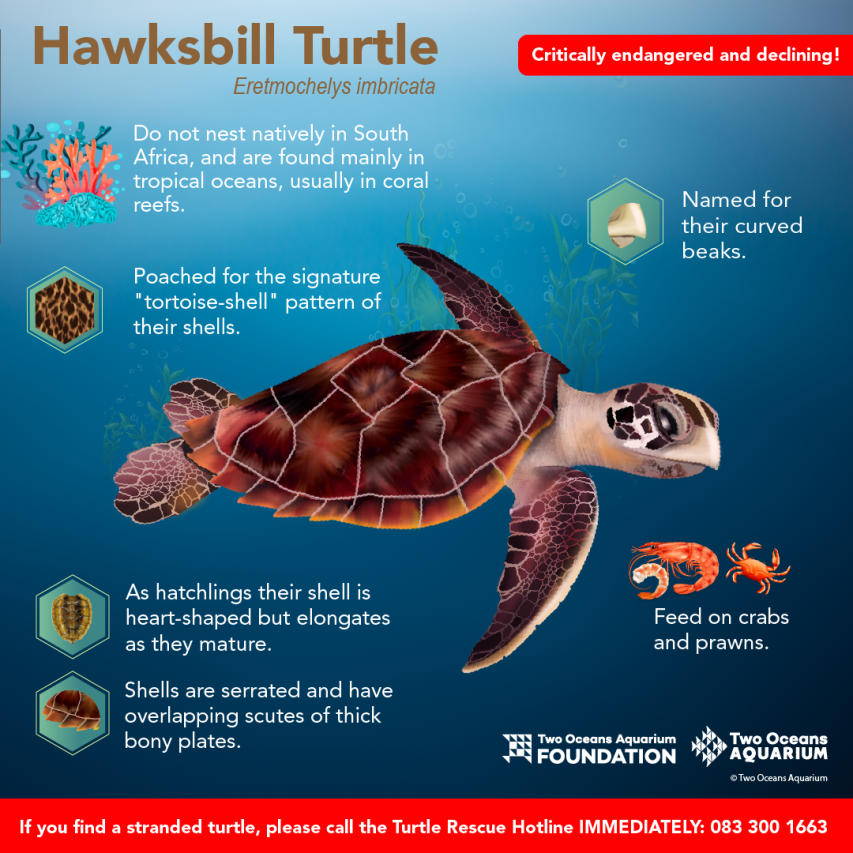
Olive ridley turtles
The olive ridley turtle is so named for the olive-green colour of its shell, although nobody knows there the word "ridley" originates. These turtles enter South African waters as strays and are the smallest turtles in our waters, weighing 35kg on average as adults.
The turtle team here at the Aquarium has rehabilitated three olive ridley turtles since 2017, mainly because they prefer the open ocean and do not venture near the coastline all that often.
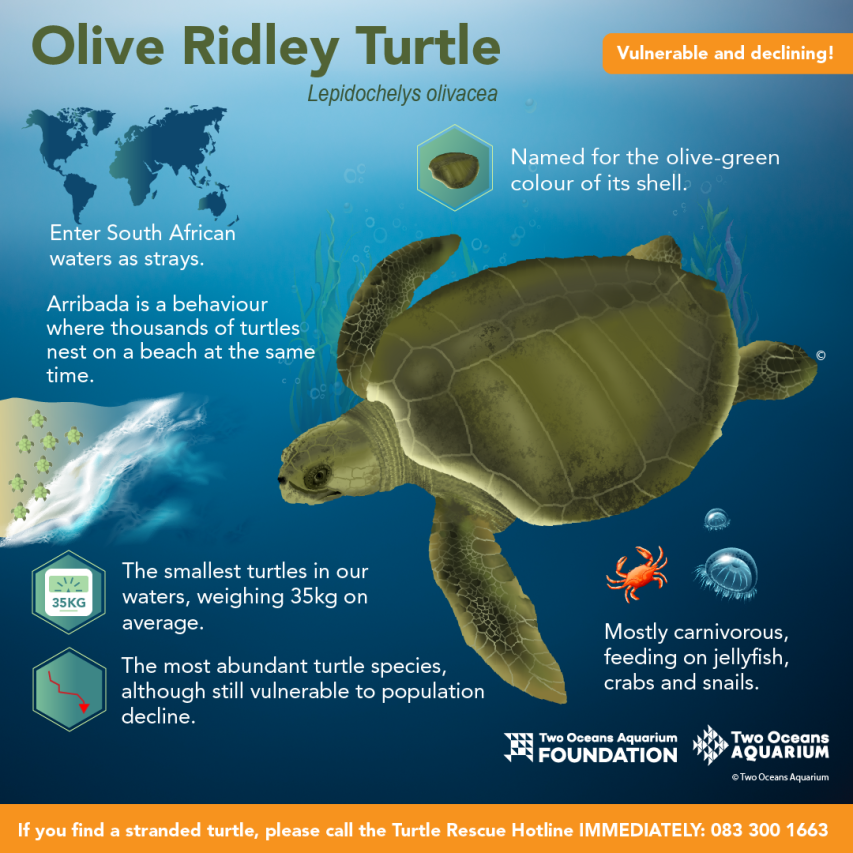
We hope you've enjoyed that information! If you'd like to support our Turtle Conservation Centre more this World Turtle Day, here's how:
Related News
Sign up to our Newsletter
Receive monthly news, online courses and conservation programmes.



